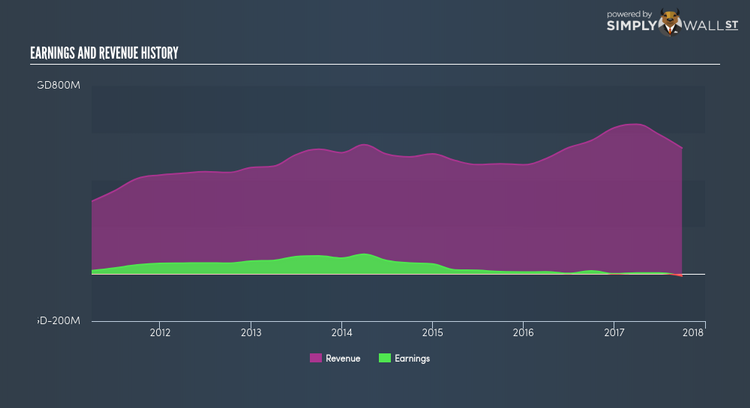Aspial Corporation Limited (SGX:A30): What Does It Mean For Your Portfolio?

If you are a shareholder in Aspial Corporation Limited’s (SGX:A30), or are thinking about investing in the company, knowing how it contributes to the risk and reward profile of your portfolio is important. The beta measures A30’s exposure to the wider market risk, which reflects changes in economic and political factors. Different characteristics of a stock expose it to various levels of market risk, and the market as a whole represents a beta of one. A stock with a beta greater than one is expected to exhibit higher volatility resulting from market-wide shocks compared to one with a beta below one.
Check out our latest analysis for Aspial
What does A30’s beta value mean?
Aspial’s beta of 0.34 indicates that the company is less volatile relative to the diversified market portfolio. This means the stock is more defensive against the ups and downs of a stock market, moving by less than the entire market index in times of change. A30’s beta implies it may be a stock that investors with high-beta portfolios might find relevant if they wanted to reduce their exposure to market risk, especially during times of downturns.
Could A30’s size and industry cause it to be more volatile?
A30, with its market capitalisation of S$484.12M, is a small-cap stock, which generally have higher beta than similar companies of larger size. In addition to size, A30 also operates in the real estate industry, which has commonly demonstrated strong reactions to market-wide shocks. Therefore, investors may expect high beta associated with small companies, as well as those operating in the real estate industry, relative to those more well-established firms in a more defensive industry. This is an interesting conclusion, since both A30’s size and industry indicates the stock should have a higher beta than it currently has. A potential driver of this variance can be a fundamental factor, which we will take a look at next.
Is A30’s cost structure indicative of a high beta?
An asset-heavy company tends to have a higher beta because the risk associated with running fixed assets during a downturn is highly expensive. I test A30’s ratio of fixed assets to total assets in order to determine how high the risk is associated with this type of constraint. Since A30’s fixed assets are only 12.16% of its total assets, it doesn’t depend heavily on a high level of these rigid and costly assets to operate its business. Thus, we can expect A30 to be more stable in the face of market movements, relative to its peers of similar size but with a higher portion of fixed assets on their books. Similarly, A30’s beta value conveys the same message.
What this means for you:
You could benefit from lower risk during times of economic decline by holding onto A30. Its low fixed cost also means that, in terms of operating leverage, it is relatively flexible during times of economic downturns. What I have not mentioned in my article here are important company-specific fundamentals such as Aspial’s financial health and performance track record. I highly recommend you to complete your research by taking a look at the following:
1. Financial Health: Is A30’s operations financially sustainable? Balance sheets can be hard to analyze, which is why we’ve done it for you. Check out our financial health checks here.
2. Past Track Record: Has A30 been consistently performing well irrespective of the ups and downs in the market? Go into more detail in the past performance analysis and take a look at the free visual representations of A30’s historicals for more clarity.
3. Other High-Performing Stocks: Are there other stocks that provide better prospects with proven track records? Explore our free list of these great stocks here.
To help readers see pass the short term volatility of the financial market, we aim to bring you a long-term focused research analysis purely driven by fundamental data. Note that our analysis does not factor in the latest price sensitive company announcements.
The author is an independent contributor and at the time of publication had no position in the stocks mentioned.

